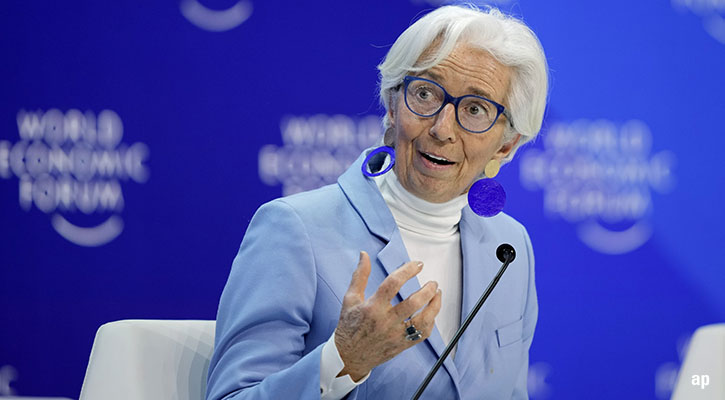Christine Benz: Hi, I'm Christine Benz for Morningstar.com.
With the prospect of higher interest rates looming large, many investors are naturally attuned to the risks that could be lurking in their bond portfolios.
Joining me to discuss some hidden risks in bond funds today is Eric Jacobson. He is a senior mutual fund analyst with Morningstar.
Eric, thank you so much for being here.
Eric Jacobson: Hi, Christine. Great to talk to you.
Benz: Eric, let's start by talking about one risk factor that probably very few fund investors saw coming, and that's the fact that some bond funds are actually buying stocks these days.
Jacobson: That's right. The numbers aren't actually that great in terms of the number of funds. There are only about 40 of them in our database, for example, that have more than 5% of their assets in stocks. But if you own one of those funds, it certainly can change the flavor of your portfolio.
Benz: So, let's talk about the types of bond funds that would be most likely to have equity exposure. Would I find it in, say, my general bond fund, or would I have to have something a little more specialized?
Jacobson: It does pop up in a few generals, what we might think of as core bond funds, but more frequently you'll see it in funds that tend to be a little bit riskier by design, such as multisector bond funds or high-yield bond funds.
Benz: Well, let's just discuss why this would be a risk factor. What's the problem with this?
Jacobson: The biggest risk is that, as most people know, stocks just tend to be more volatile than bonds. We've got a lot of fear out there, obviously, right now about rising interest rates. But even if you go back and look at 2008 and the worst of things that happened, even bonds with considerable risk outside of interest rate risk still performed better than the equity markets did, and certainly bonds with a lot of interest rate risk, such as Treasuries, actually performed very well during 2008 and provided that kind of diversification ballast. The more you venture into stocks inside of a bond fund, the more you may tilt the flavor of that fund away from the bond market.
Benz: Let's talk about another potential risk factor, Eric, and that's the potential for bond funds to be holding foreign bonds. First, I'd like to discuss, is that a risk factored at all. So, for example, if my fund has some foreign bonds, will those bonds necessarily be more risky than U.S. bonds?
<TRANSCRIPT>
Jacobson: I would say in general just the presence of foreign bonds alone, assuming that they are investment-grade bonds, is probably not a major risk factor that you need to worry about, because there are actually bonds that are maybe domiciled somewhere else, but are issued in dollars--they very often are just as high quality as anything else in your portfolio, and you don't necessarily want to just walk away or take too much concern over something like that.
Benz: OK. So, I know PIMCO Total Return, for example, has done a lot with foreign bonds over the years. You think in a fund like that, and in a strategy like that, maybe not such a big cause for concern?
Jacobson: Well, especially given sort of the second step of the question, which is, what about bonds in local currency, and in the case of PIMCO, most of that exposure is hedged away anyway--the currency exposure inherent in locally denominated high-quality bonds.
The bigger risk that you run into, as you might imagine, is holding foreign bonds and not hedging away the currency exposure. There may be a very good reason that a manager is choosing to do that in terms of his or her investment thesis. But it is going to change the nature of a fund, at least on the margins, if you take on actual currency risk in an otherwise dollar-denominated portfolio.
Benz: Eric, where will you tend to see that type of exposure? Are you going to find it in a general intermediate-term bond fund, or would you need to be in some of the more specialized categories?
Jacobson: Well, kind of like the equity question of whether or not there are equities in your fund, this is another one where it might be sneaking in without you realizing it.
By and large, I wouldn't expect to find it in too many core bond funds--in other words, currency exposure. You will probably find it more often in a multisector fund, many of which are designed to give you some sort of foreign bond exposure, high-quality U.S. exposure of one kind or another, and maybe high-yield and/or emerging markets depending on the mix. There are lot of different flavors. And certainly world bond funds very often have currency exposure.
Benz: Sure. So, the idea is to do your homework and know what your fund's policy is about owning bonds denominated in foreign currencies?
Jacobson: Exactly.
Benz: OK. Eric, let's move on to the next issue that investors might find if they do some digging into their portfolios. You note that general bond funds increasingly have been looking to, A) high-yield bonds, and B) emerging-markets bonds. Let's talk about why that's happening. What's motivating these managers to look into some of these categories?
Jacobson: Well, there are two sides to this coin. One is a little bit more kind, in terms of how it might reflect on the manager, and the other is a little more sinister.
On the positive side, there are many managers who believe that the highest-quality parts of the bond market especially are really overvalued or don't offer enough value, given how little that they are yielding. So they've been scouring other parts of the market, looking for areas where they think there still may be value and they're coming across these sectors.
In fairness to them, there are a lot of emerging markets that have been upgraded quite a bit in the last couple of years, and a big chunk of the emerging-markets index actually gets investment-grade ratings now. So, it's not necessary all that bad an idea.
The flip side, however, is that I do think there are lot of managers, and perhaps even managers being driven by the way that their funds are marketed and their higher echelons at their firms, to chase yield, because yield tends to sell funds, and yield-chasing very often takes the form--especially, as you say, in core funds--of stretching out into a little bit of an area that's not in your benchmark, but that can deliver a little extra income and may be juice the returns a bit.
Benz: You mentioned, Eric, that good-yielding bonds are few and far between in the high-quality space. That's arguably the case these days even in these higher-yielding sectors, correct, where the yields have really compressed quite a bit?
Jacobson: That's exactly right. We're at the point now where people are questioning if the value is even there, so it's certainly a problem.
Benz: OK. So, your underlying message with all of this, it sounds like, is to really get to know your fund, dig into its portfolio, look at where your manager is finding yield these days.
Jacobson: That's exactly right.
Benz: OK. Eric, thank you so much for being here to talk about these hidden risk factors in bond funds.
Jacobson: Thanks so much, Christine. Glad to be with you.
Benz: Thanks for watching. I'm Christine Benz for Morningstar.com.

















